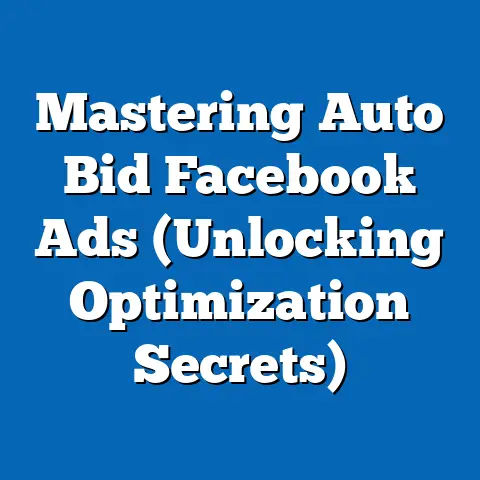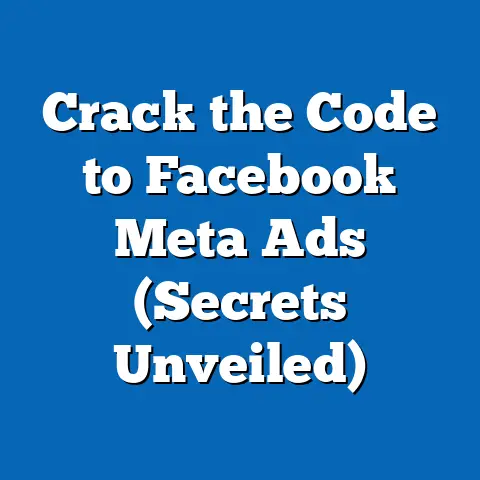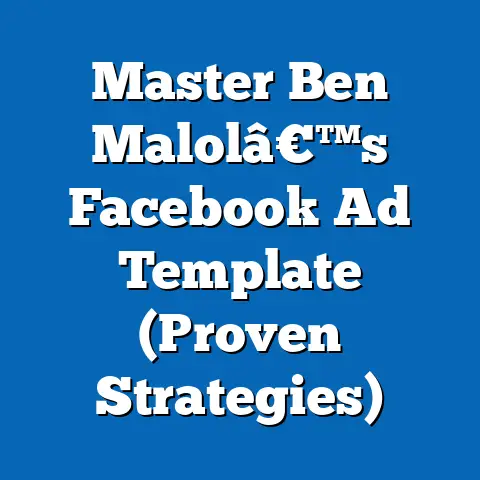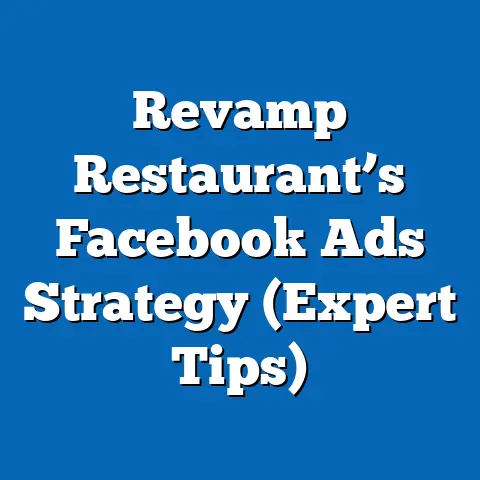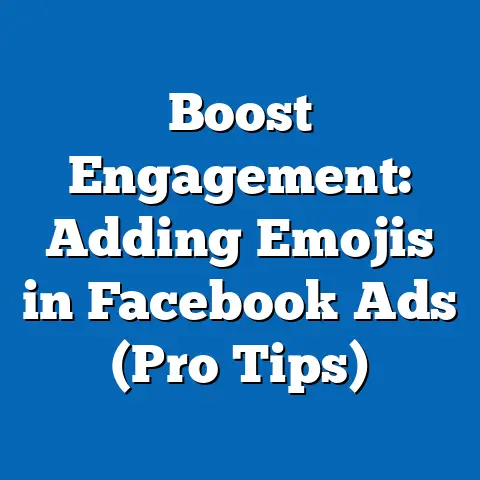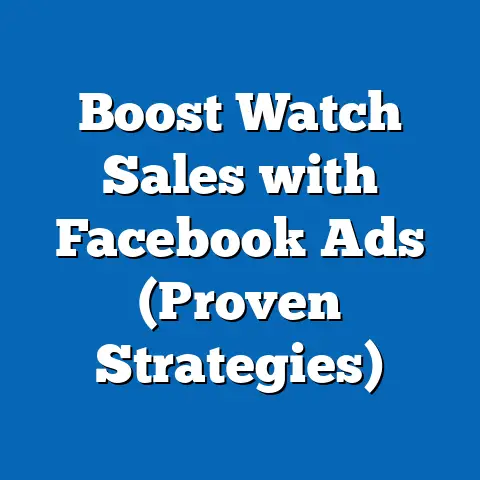Unlock Facebook & Instagram Ad Costs (Expert Insights Revealed)
Unlock Facebook & Instagram Ad Costs: Expert Insights Revealed
“I’m going to make him an offer he can’t refuse.” Remember that line from “The Godfather”? It’s iconic, a masterclass in persuasive communication. In the world of Facebook and Instagram advertising, you’re essentially trying to do the same thing – make your offer so compelling, so relevant, that your target audience simply can’t ignore it. But unlike Don Corleone, you’re not dealing with threats; you’re dealing with algorithms, bidding strategies, and the ever-fickle attention of social media users. And just like the art of negotiation, mastering Facebook and Instagram ad costs is about understanding the landscape, knowing your audience, and playing your cards right.
Section 1: Understanding the Landscape of Facebook & Instagram Advertising
Facebook and Instagram aren’t just social media platforms; they’re advertising juggernauts. I’ve seen firsthand how a well-crafted campaign can catapult a small business to new heights, and equally, how a poorly planned one can drain a budget faster than you can say “algorithm update.”
- The Reach and Demographics: Let’s talk numbers. As of late 2023/early 2024, Facebook boasts nearly 3 billion monthly active users (MAU), while Instagram clocks in at over 2 billion. That’s a massive pool of potential customers. What’s even more crucial is the demographic diversity. You can find everyone from Gen Z trendsetters on Instagram to Baby Boomers sharing family photos on Facebook.
- The Algorithmic Influence: But here’s the catch: you’re not directly reaching those billions. You’re navigating algorithms that determine who sees your ads. These algorithms consider factors like ad quality, relevance, and bidding strategies. They’re constantly evolving, which means what worked last month might not work today.
-
Ad Format Variety: Both platforms offer a smorgasbord of ad formats to suit different objectives and creative styles. I remember when carousel ads first came out – I was skeptical, but after testing them, I found they were fantastic for showcasing multiple products and driving click-through rates. Here’s a quick rundown:
- Photo Ads: Simple, visual, and effective when you have a compelling image.
- Video Ads: Great for storytelling and grabbing attention in a noisy feed.
- Carousel Ads: Showcase multiple products or features in a single ad unit.
- Collection Ads: A visually immersive format that allows users to browse and purchase products directly from the ad.
- Stories Ads: Full-screen, ephemeral ads that appear between users’ Stories.
Ad Format Variety: Both platforms offer a smorgasbord of ad formats to suit different objectives and creative styles. I remember when carousel ads first came out – I was skeptical, but after testing them, I found they were fantastic for showcasing multiple products and driving click-through rates. Here’s a quick rundown:
- Photo Ads: Simple, visual, and effective when you have a compelling image.
- Video Ads: Great for storytelling and grabbing attention in a noisy feed.
- Carousel Ads: Showcase multiple products or features in a single ad unit.
- Collection Ads: A visually immersive format that allows users to browse and purchase products directly from the ad.
- Stories Ads: Full-screen, ephemeral ads that appear between users’ Stories.
Takeaway: Facebook and Instagram offer unparalleled reach and targeting capabilities, but understanding the platform’s algorithms and ad formats is crucial for success.
Section 2: Factors Influencing Ad Costs on Facebook & Instagram
Okay, let’s get down to the nitty-gritty: what makes those ad costs tick? It’s not just random; a complex interplay of factors determines how much you pay.
-
Bidding Strategies (CPC vs. CPM): This is where the rubber meets the road.
- CPC (Cost Per Click): You pay each time someone clicks on your ad. It’s great for driving traffic to your website or landing page.
- CPM (Cost Per Mille): You pay for every 1,000 impressions (times your ad is shown). It’s ideal for brand awareness campaigns where you want to get your message in front of as many people as possible.
Bidding Strategies (CPC vs. CPM): This is where the rubber meets the road.
- CPC (Cost Per Click): You pay each time someone clicks on your ad. It’s great for driving traffic to your website or landing page.
- CPM (Cost Per Mille): You pay for every 1,000 impressions (times your ad is shown). It’s ideal for brand awareness campaigns where you want to get your message in front of as many people as possible.
I’ve found that CPC is often a good starting point, especially when you’re focused on driving conversions. However, for brand-building, CPM can be more cost-effective. Facebook also offers other bidding options like Cost Per Action (CPA) and Value Optimization. * Target Audience Specifics (Age, Location, Interests): The more specific your audience, the higher the potential cost. Targeting a broad audience like “everyone interested in sports” will be cheaper than targeting “30-35-year-old women in New York City interested in yoga and organic food.” Why? Because the latter is a much more valuable, niche audience. * Seasonality and Timing (Peak Seasons vs. Off-Peak): Just like retail, advertising has its peak seasons. Think Black Friday, Christmas, and other major holidays. During these times, demand for ad space skyrockets, driving up costs. I once made the mistake of launching a campaign targeting holiday shoppers without adjusting my budget – it was a costly lesson! * Ad Relevance and Quality Score: Facebook rewards ads that are relevant and engaging to users. Your ad’s relevance score is based on factors like expected engagement, quality, and conversion rates. A high relevance score can lower your costs and improve your ad’s performance.
Takeaway: Ad costs are influenced by a variety of factors, including bidding strategies, audience targeting, seasonality, and ad quality. Optimizing these elements can significantly reduce your advertising expenses.
Section 3: The Role of Audience Targeting in Cost Management
Targeting isn’t just about reaching more people; it’s about reaching the right people. I remember working with a local bakery that was struggling to get traction with their Facebook ads. They were targeting everyone in a 50-mile radius, which was incredibly inefficient. By narrowing their focus to people who lived within a 5-mile radius and were interested in baking and local businesses, their ad costs plummeted, and their sales soared.
-
Precise Audience Targeting: Facebook Ads Manager offers a treasure trove of targeting options:
- Demographics: Age, gender, education, relationship status, etc.
- Interests: Hobbies, activities, pages they like, etc.
- Behaviors: Purchase history, device usage, travel habits, etc.
- Custom Audiences: Upload your own customer list or target people who have interacted with your website or app.
- Lookalike Audiences: Find new people who are similar to your existing customers.
-
Tools and Techniques: Facebook Ads Manager provides tools like:
- Audience Insights: Get a deeper understanding of your target audience’s demographics, interests, and behaviors.
- Saved Audiences: Save your favorite targeting combinations for future use.
- Detailed Targeting Expansion: Allow Facebook to expand your targeting to reach people who are likely to convert, even if they don’t perfectly match your initial criteria.
-
Case Study: Dollar Shave Club is a fantastic example of a brand that mastered audience targeting. They used Facebook ads to target men aged 18-35 with a sense of humor and an interest in grooming products. Their ads were funny, relatable, and highly effective at driving subscriptions.
Precise Audience Targeting: Facebook Ads Manager offers a treasure trove of targeting options:
- Demographics: Age, gender, education, relationship status, etc.
- Interests: Hobbies, activities, pages they like, etc.
- Behaviors: Purchase history, device usage, travel habits, etc.
- Custom Audiences: Upload your own customer list or target people who have interacted with your website or app.
- Lookalike Audiences: Find new people who are similar to your existing customers.
Tools and Techniques: Facebook Ads Manager provides tools like:
- Audience Insights: Get a deeper understanding of your target audience’s demographics, interests, and behaviors.
- Saved Audiences: Save your favorite targeting combinations for future use.
- Detailed Targeting Expansion: Allow Facebook to expand your targeting to reach people who are likely to convert, even if they don’t perfectly match your initial criteria.
Case Study: Dollar Shave Club is a fantastic example of a brand that mastered audience targeting. They used Facebook ads to target men aged 18-35 with a sense of humor and an interest in grooming products. Their ads were funny, relatable, and highly effective at driving subscriptions.
Takeaway: Precise audience targeting is essential for reducing ad costs and improving ROI. Use Facebook Ads Manager’s tools to segment your audience and create highly targeted campaigns.
Section 4: Analyzing the Competition and Benchmarking Costs
You’re not operating in a vacuum. Your competitors are vying for the same audience, and understanding their strategies is crucial. Competitive analysis can give you a valuable edge.
-
Competitive Analysis:
- Facebook Audience Insights: This tool can help you identify your competitors’ target audience, the pages they like, and the ads they’re running.
- Ad Library: Facebook’s Ad Library allows you to see all the active ads running on Facebook and Instagram. This is a goldmine for understanding your competitors’ creative strategies and messaging.
-
Benchmarking Average Costs: Industry benchmarks provide a baseline for understanding whether your ad costs are reasonable. Keep in mind that these benchmarks can vary widely depending on your industry, target audience, and campaign objectives.
- Expert Opinion: “Don’t just copy your competitors,” advises Rand Fishkin, founder of Moz. “Instead, use their strategies as inspiration and find ways to differentiate yourself. Focus on providing unique value to your target audience.”
Competitive Analysis:
- Facebook Audience Insights: This tool can help you identify your competitors’ target audience, the pages they like, and the ads they’re running.
- Ad Library: Facebook’s Ad Library allows you to see all the active ads running on Facebook and Instagram. This is a goldmine for understanding your competitors’ creative strategies and messaging.
Benchmarking Average Costs: Industry benchmarks provide a baseline for understanding whether your ad costs are reasonable. Keep in mind that these benchmarks can vary widely depending on your industry, target audience, and campaign objectives.
Takeaway: Analyzing your competition and benchmarking costs can help you identify opportunities to optimize your ad spend and gain a competitive advantage.
Section 5: Ad Creative and Its Impact on Costs
Let’s face it: people scroll through their Facebook and Instagram feeds at lightning speed. Your ad has milliseconds to grab their attention. That’s why your ad creative is so crucial.
- Quality of Ad Creatives: High-quality images and videos are essential. They should be visually appealing, relevant to your target audience, and aligned with your brand.
- A/B Testing: A/B testing involves creating multiple versions of your ad and testing them against each other to see which performs best. Test different headlines, images, calls to action, and targeting options.
- Expert Insights: “Your ad creative is your first impression,” says Gary Vaynerchuk. “Make it count. Focus on creating content that is authentic, engaging, and provides value to your target audience.”
Takeaway: Ad creative plays a significant role in determining ad performance and costs. Invest in high-quality visuals, compelling copy, and A/B testing to optimize your ad creative.
Section 6: Measuring Success and ROI
You’re spending money on ads; you need to know if it’s working. Measuring success is about tracking the right metrics and understanding what they mean.
-
Key Performance Indicators (KPIs):
- Click-Through Rate (CTR): The percentage of people who click on your ad after seeing it.
- Conversion Rate: The percentage of people who take a desired action (e.g., make a purchase, sign up for a newsletter) after clicking on your ad.
- Cost Per Acquisition (CPA): The cost of acquiring a new customer through your ad campaign.
- Return on Ad Spend (ROAS): The amount of revenue you generate for every dollar you spend on ads.
-
Tracking ROI: ROI is calculated as (Revenue – Cost) / Cost. For example, if you spend $1,000 on ads and generate $3,000 in revenue, your ROI is (3000 – 1000) / 1000 = 2 or 200%.
- Facebook Pixel and Analytics Tools: Facebook Pixel is a snippet of code that you install on your website to track conversions, optimize ads, and build targeted audiences. Other analytics tools, like Google Analytics, can provide additional insights into your website traffic and user behavior.
Key Performance Indicators (KPIs):
- Click-Through Rate (CTR): The percentage of people who click on your ad after seeing it.
- Conversion Rate: The percentage of people who take a desired action (e.g., make a purchase, sign up for a newsletter) after clicking on your ad.
- Cost Per Acquisition (CPA): The cost of acquiring a new customer through your ad campaign.
- Return on Ad Spend (ROAS): The amount of revenue you generate for every dollar you spend on ads.
Tracking ROI: ROI is calculated as (Revenue – Cost) / Cost. For example, if you spend $1,000 on ads and generate $3,000 in revenue, your ROI is (3000 – 1000) / 1000 = 2 or 200%.
Takeaway: Measuring success is essential for optimizing your ad campaigns and maximizing ROI. Track key performance indicators, calculate ROI, and use analytics tools to gain a deeper understanding of your ad performance.
I’ve compiled some tips from industry experts that I’ve personally found helpful over the years.- Retargeting and Lookalike Audiences: Retargeting involves showing ads to people who have previously interacted with your website or app. Lookalike audiences are new people who are similar to your existing customers. Both of these strategies can be highly cost-effective.
- Budget Allocation and Campaign Management: Don’t put all your eggs in one basket. Diversify your budget across multiple campaigns and ad sets. Monitor your campaigns closely and make adjustments as needed.
- Expert Insights:
- “Test everything,” says Amy Porterfield. “Don’t assume you know what will work. Use A/B testing to optimize your ads and landing pages.”
- “Focus on creating value,” says Marie Forleo. “Don’t just sell; educate, entertain, and inspire your target audience.”
- “Test everything,” says Amy Porterfield. “Don’t assume you know what will work. Use A/B testing to optimize your ads and landing pages.”
- “Focus on creating value,” says Marie Forleo. “Don’t just sell; educate, entertain, and inspire your target audience.”
Takeaway: Retargeting, lookalike audiences, and strategic budget allocation can help you reduce ad costs and improve campaign performance.
Section 8: Future Trends in Facebook & Instagram Advertising Costs
The advertising landscape is constantly evolving. What works today might not work tomorrow. Staying ahead of the curve is crucial.
-
Emerging Trends:
- AI in Advertising: Artificial intelligence is transforming the way we advertise. AI-powered tools can help you automate tasks, optimize campaigns, and personalize ads.
- Changes in User Behavior: User behavior is constantly changing. Stay informed about the latest trends and adjust your strategies accordingly.
-
Evolving Privacy Regulations: Privacy regulations, like GDPR and CCPA, are impacting ad targeting and costs. Be transparent with your users about how you collect and use their data.
- Expert Forecasts: “The future of advertising is personalized and privacy-focused,” says Brian Solis. “Advertisers need to focus on building trust with their customers and providing them with valuable experiences.”
Emerging Trends:
- AI in Advertising: Artificial intelligence is transforming the way we advertise. AI-powered tools can help you automate tasks, optimize campaigns, and personalize ads.
- Changes in User Behavior: User behavior is constantly changing. Stay informed about the latest trends and adjust your strategies accordingly.
Evolving Privacy Regulations: Privacy regulations, like GDPR and CCPA, are impacting ad targeting and costs. Be transparent with your users about how you collect and use their data.
Takeaway: The future of Facebook and Instagram advertising will be shaped by AI, changing user behavior, and evolving privacy regulations. Stay informed, adapt your strategies, and focus on building trust with your customers.
Conclusion: The Road Ahead
Navigating the world of Facebook and Instagram ad costs can feel like trying to decipher a complex code. But by understanding the factors that influence costs, optimizing your targeting and creative, and staying ahead of the curve, you can unlock the full potential of these powerful advertising platforms.
Remember that line from “The Godfather”? “It’s not personal, Sonny. It’s strictly business.” While your ads should absolutely feel personal to your audience, the strategies you use to manage your budget and optimize your campaigns should be approached with a cold, calculating, business-minded perspective.

